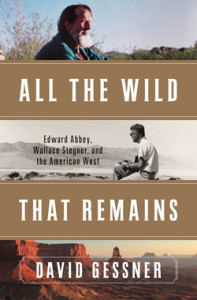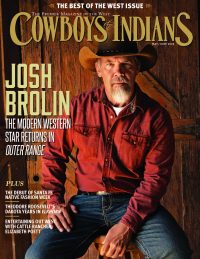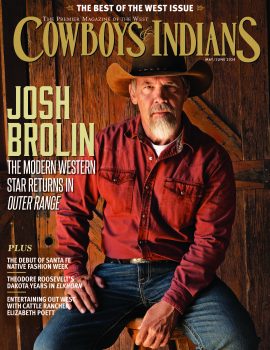A new book explores how the environmental wisdom of two Western writers, wild man Edward Abbey and scholarly Wallace Stegner, still resonates.
In 2012, essayist, professor, and environmentalist David Gessner swapped the University of North Carolina Wilmington’s crowded lecture halls for a much larger — and inarguably more majestic — classroom: the American West. In this setting, though, he was the student. Keeping Gessner company for three weeks on a solo road trip through Colorado’s craggy canyons, Utah’s boomtowns, and Wyoming’s national parks was a box full of books written by two authors he’d adopted as his itinerant teachers: Edward Abbey and Wallace Stegner.
Abbey and Stegner are remembered as prominent 20th-century literary figures whose fiction and nonfiction works alike champion the Western landscape. Each urges readers to love, understand, and preserve the region’s sun-scorched ecosystem. However, both men came of age in a far different era than their pupil.
Stegner, who is perhaps most famous for his novel Angle of Repose, died in 1993 at the age of 84. Abbey, whose nonfiction Desert Solitaire has been described as a Westernized Walden, was 62 when he died in 1989. Their lives and works predated the recreational tourism, wildfires, droughts, fracking, and drilling that today threaten the region they loved. But in his recently released book, All the Wild That Remains: Edward Abbey, Wallace Stegner, and the American West, Gessner chronicles his quest to trace the two authors’ footsteps as he learns about their lives and the land on which they lived. While visiting the sites, scenes, and people that inspired Stegner and Abbey’s words, he wonders how his two literary forefathers would respond to the human activity that today threatens to ravage the West’s tenuous topography. Can the age-old wisdom he’s gleaned from their works be applied to modern threats?
The answer, Gessner concludes, is a resounding yes. “Wallace Stegner and Edward Abbey, far from being regional or outdated, have never been more relevant,” he writes. “In this overheated and overcrowded world, their books can serve as guides, as surely as any gazetteer, and as maps, as surely as any atlas.”
Gessner’s narrative is equal parts travelogue and biography, environmental prose and literary criticism. The disparate elements meld together to form a work that’s circumspect in some ways, but celebratory in others — mindful of ever-present eco-dangers, but equally exultant of the West’s natural beauty.

All the Wild That Remains is filled with lush natural descriptions and carefully considered arguments that take practices like fracking and industrialization to task. But perhaps most compelling are Gessner’s characterizations of Stegner and Abbey, whose personalities seem on the surface — and on paper — to mix like oil and water. Peers and colleagues alike remember Stegner as staid and serious, moderate and mindful. A professor, writer, and wilderness advocate, Stegner had manifold accomplishments. His 1971 novel Angle of Repose earned him a Pulitzer Prize for Fiction, and he founded Stanford University’s creative writing program. He also practiced what he preached, lobbying the U.S. government to preserve Western sites such as Dinosaur National Monument in Colorado.
In contrast, Edward Abbey was a moody, booze-soaked Bacchus with a penchant for fiery polemics and passionate prose. His seminal 1975 novel The Monkey Wrench Gang pioneered a new form of lawless environmental activism that was aptly dubbed “monkeywrenching” — blowing up bridges, sawing down billboards, and pouring sugar into the gas tanks of bulldozers. Stegner, who’d once briefly taught Abbey in Stanford’s creative writing program, disdained the hippie counterculture that invigorated Abbey and his friend and classmate Ken Kesey. Meanwhile, Abbey, in a New York Times book review, once wrote that his former professor suffered from “an excess of moderation.”
However, the two shared a common belief: The arid West was unique and should be treated accordingly. Thanks to its limited resources, it’s less resilient than other regions — and more likely to become permanently and irrevocably scarred. The West, they argued, is not to be conquered and inhabited. Instead, it should remain wild if we want it to remain at all.
With a swiftly warming planet, a rapacious demand for oil and natural resources, and an exploding population, this idea is radical — yet timeless — in its simplicity. And if minds as different as Abbey and Stegner can reach the same conclusion, one can hope that Gessner’s readers will as well.
All the Wild That Remains: Edward Abbey, Wallace Stegner, and the American West is available in hardcover from W.W. Norton & Company. Visit www.david-gessner.com for more information.












